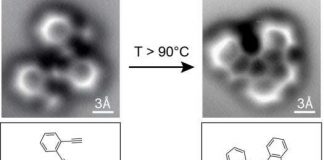AUGUST 1, 2018

Impact of Home Loan Rate Hike on EMI & Total Interest Payable
Bad news for borrowers, particularly those who have taken a home loan or are planning to take one, as with the latest hike in policy rates, their EMIs are all set to go up soon. Contrary to wide expectations that the Reserve Bank of India will most likely keep its key policy rates on hold in its August 1 policy meet, the apex bank in a surprise move increased the repo rate by 25 bps to 6.50% — for the second time this year. With this all types of loans — including home and car loans — are set to cost more. In fact, a majority of banks have already increased their deposit rates apart from going in for a hike in their MCLR.
It may be noted that having increased the repo rate by 25 bps in its June 6 monetary policy meet, the RBI was widely expected to keep its key rates on hold in its August policy meet today. A majority of market analysts and industry experts were of the view that the RBI may keep its key rates on hold this time, but a hawkish statement was likely, which will prepare the ground for a rate hike in the near future.
Edelweiss Securities, for instance, said that they expected the RBI to keep the repo rate unchanged at 6.25% after a rate hike in its last meet, which came post a hiatus of four years. “MPC raised rates in its last policy meet, but kept monetary stance “neutral”, suggesting it is not on a preset course, but more dependent on incoming data and developments. In the upcoming policy review, we expect MPC to maintain its neutral stance while keeping the rates unchanged. There are three broad considerations — inflation behaviour, strength of economy and external conditions. In our view, developments on these fronts so far do not suggest a need for policymakers to rush for another hike in the forthcoming review,” it said in a research report.
Dr. Soumya Kanti Ghosh, Group Chief Economic Adviser, SBI, also expressed hope that “in the upcoming policy RBI should adopt the wait and watch stance as outlook on inflation is still stable and there are global uncertainties regarding the policy stance adopted by other central banks.”
However, now the lending rates are all set to go up. Industry experts are of the view that even if the RBI hadn’t increased its policy rate, banks were set to go for a hike in their lending rates sooner or later. “While policy rates set by MPC are vital, that is not the only factor that determines a bank’s MCLR. They also give significant weightage to the cost of deposits while calculating MCLR. Therefore, irrespective of whether MPC changes the repo rate or not, any rise in banks’ fixed deposit rates can increase their cost of deposits, and subsequently result in the MCLR rate hike,” says Naveen Kukreja, CEO & Co-founder, Paisabazaar.com.
It may be noted that ahead of the RBI’s bi-monthly monetary policy review, some banks — including SBI — have already increased their deposit rates, while some of them have gone for a hike in MCLR in recent months. This means that banks’ lending rates are also set for a hike in the near future. If that happens, all types of loans — including personal and home loans — will become costlier going ahead, and the maximum impact will be on the housing loan borrowers as home loans are taken for a longer period of 10 to 20 years, in most cases.
Here is a look at how an increase in home loan rates will impact your EMIs:
Suppose, Delhi-based Rohit Sardana is looking for a housing loan of Rs 60 lakh for buying a house of Rs 80 lakh. If he takes a housing loan of Rs 60 lakh at 8.50% interest for 20 years, this would imply an EMI of Rs 52,069. Over 20 years, Mr. Sardana would be paying Rs 64,96,654 as interest. A 25 bps increase in the interest rate would increase the EMI to Rs 53,022 and the total interest paid to Rs 67,25,434. A 50 bps rate hike, on the other hand, would increase the EMI to Rs 53,983 and the total interest payable to Rs 69,56,053. That’s Rs 2,28,780 more in case of a 25 bps rate increase and Rs 4,59,399 more in case of a 50 bps rate hike.
What should home loan borrowers do if lending rates are raised?
Whenever the banks raise MCLR, its existing home loan borrowers would continue to repay their current loans at the existing interest rates, until the next loan reset date. “In case the home loan rates increase post the reset dates, the existing borrowers should first compare the new rates with the ones offered by other lenders, and find out if there is any merit (in terms of savings) in transferring their loan to another lender. If the savings are substantial, the borrower should first try and renegotiate the interest rates with their current lender. Consider home loan balance transfer if the existing lender refuses to reduce the rates,” says Kukreja.
Given that home loan rates can vary widely depending on the lender, credit profile of the customer and loan amount, new home loan borrowers should compare the home loan rates before finalizing any particular lender.
Borrowers under base rate
Irrespective of whether MPC changes the policy rates or not, the existing home loan borrowers serving loans under the base rate regime should switch to the MCLR-based interest rate system. The reason being that — due to the presence of higher transparency in rate-setting and better transmission of policy rate’s changes, MCLR is clearly a superior rate setting regime than the base rate system. Furthermore, the MCLR regime requires the banks to reset the existing loan’s interest rates at least once every year. This practice ensures the transmission of policy rate changes to the existing home loan borrowers,” suggests Kukreja.
Courtesy/Source: The Financial Express











































































































